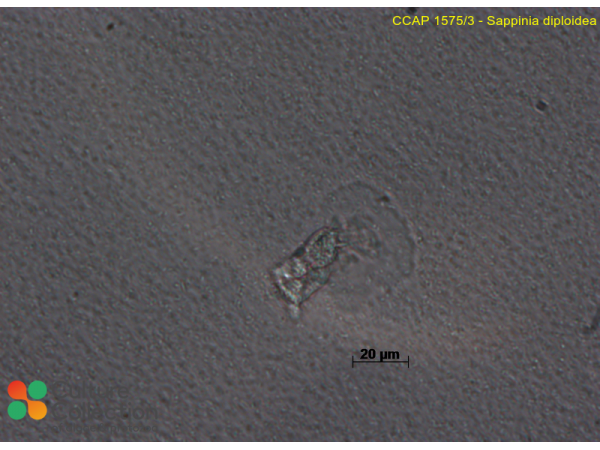References [ 4 ]
Michel R, Wylezich C, Hauröder B & Smirnov AV (2007) Phylogenetic position and notes on the ultrastructure of Sappinia diploidea (Thecamoebidae). Protistology 4(4): 319-325.
DOI: none
Michel R, Müller K-D & Hauröder B (2009) A novel microsporidian endoparasite replicating within the nucleus of Saccamoeba limax isolated from a pond. Endocytobiosis Cell Research 19: 120-126.
DOI: none
Wylezich C, Walochnik J & Michel R (2009) High genetic diversity of Sappinia-like strains (Amoebozoa, Thecamoebidae) revealed by SSU rRNA investigations. Parasitology Research 105: 869-873.
Henderson TC, Garcia-Gimeno L, Beasley Jr. CE, Fry NW, Bess J & Brown MW (2024) High above the rest: standing behaviors in the amoebae of Sappinia and Thecamoeba. European Journal of Protistology 94: 126082.
Sequences [ 1 ]
EMBL/Genbank Links
(Bold text = submission by CCAP staff or collaborators)
Division/Phylum: Amoebozoa Class: Discosea
Note: for strains where we have DNA barcodes we can be reasonably confident of identity, however for those not yet sequenced we rely on morphology
and the original identification, usually made by the depositor. Although CCAP makes every effort to ensure the correct taxonomic identity of strains, we cannot guarantee
that a strain is correctly identified at the species, genus or class levels. On this basis users are responsible for confirming the identity of the strain(s) they receive
from us on arrival before starting experiments.
For strain taxonomy we generally use AlgaeBase for algae and
Adl et al. (2019) for protists.
| Attributes |
| Authority | (Hartmann & Nägler) Michel et al. 2006 |
| Isolator | Michel (2003) |
| Collection Site | bark of moss-covered fallen Beech tree Snogeholm, Sweden |
| Archive Date |
2023-03-13 17:15:26 |
| Archive Reason |
Dead |
| Axenicity Status |
Bacteria present |
| Area |
Europe |
| Country |
Sweden |
| Environment |
Plant/Lichen |
| Group |
Protozoa |
| Original Designation |
strain "Busnog" |
| Pathogen |
Not pathogenic: Hazard Class 1 |
| Strain Maintenance Sheet |
|
| Toxin Producer |
Not Toxic / No Data |
| Type Culture |
No |
| Taxonomy WoRMS ID |
|

